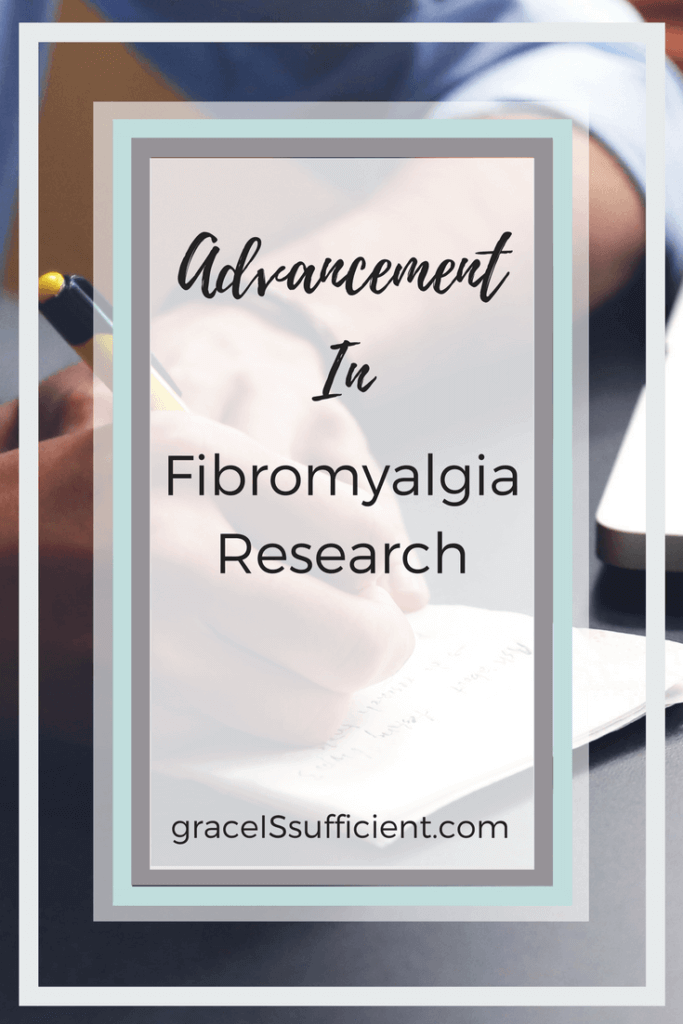In an earlier post, I mentioned that I had participated in a clinical study with the University of Michigan. The study was dealing with pain and the fibromyalgia patient.
Those of us participating in the study were placed in one of three groups. The group I was put in was basically informational – talking about studies and answering questions about our personal problems with fibro. The purpose of the group was to see if patients felt empowered by added knowledge of their illness and a sense of support from others with the same illness.
This stuff is pretty clinical, so hang on. Here’s a run-down from the group discussions…….
Advancements In Fibromyalgia ResearchGenetic Evidence
Genetically speaking, they found that first-degree relatives of a fibro sufferer (you- parents, children, siblings) have an 8 times greater chance of being diagnosed with FM/CFS. They’ve also found where several genes that influence stress and pain are more prevalent in FM/CFS patients than in those without. An example is Catechol-O-Methyltransferase (COMT) which is an enzyme involved in how we perceive pain. FM patients have 25% more, compared to those without FM.
These genetic studies can be quite complicated since there are 18,000 genes in the body. It’s hard to know what ones are affected by what. There are so many things that need to be ruled out in order to confirm their findings. Is the gene damaged or is the brain not reading the genes code properly? The process is even more complicated because medical journal publications tend to only print the new and exciting finds. But unless those studies can be replicated repeatedly and consistently, you can’t be 100% positive. What happens then is when another study is performed, and they get different results, you may never read about it in a journal because it isn’t new and exciting. This leaves doctors without the continued information.
Environmental Factors
Environmental causes are also being investigated and have been found to play a consistent role. Over 50% of people with FM can tie the diagnosis back to an accident, illness, injury or extreme stress. Even more – 20% of people who have a severe neck or back injury will later be diagnosed with FM. So did these environmental things actually cause fibro or are we genetically predisposed to the condition and these environmental occurrences just bring out the illness to a full-blown state? The jury is still out on this one!
Peripheral Causes
Testing for peripheral causes such as muscle damage, inflammation or damage in nerve tissues has been ruled out. They have, however, seen a decrease in oxygen in the tissues. But it’s hard to determine if that’s a cause or a symptom. Does that cause the tired feeling in the muscles, or is it caused by lack of exercise, which patients tend to back away from because of the pain it will cause? It can be quite a difficult call to make.
Functioning of the Nervous Systems
When you think of the two nervous systems in the body you can put them into two categories.
- The peripheral system is how the nerves transport pain signals outside of the brain and spinal cord.
- The central nervous system is contained in the brain and the spinal column.
Evidence shows that the central nervous system responds differently in patients with FM. Through functioning MRI’s they have found that when an FM patient is presented with pain, a different part of their brain reacts than a patient without FM. (I’m really glad I wasn’t part of that study and I’d like to know just how they caused pain in the patient! I can imagine it was not a fun day for them!) But this is one of the first actual diagnostic tests that prove a difference in the brain functioning of a fibro patient.
There are certain “gates” throughout the spinal cord. This is spot on the spinal cord that receives the pain signal. Let’s say you hurt your finger. A signal indicating pain in your finger is sent up the spinal cord to the brain. The brain then sends a signal back down the spinal cord to the “gate” and tells the gate to close or stay open – based on the magnitude of the pain. So if you just poked yourself a little, the brain tells the gate to go ahead and close because that little poke was no big deal. Well, in fibro patients, tests are showing that those “gates” remain open – all the way. This is making the central nervous system work overtime because the signals keep being sent up and down the spinal cord. Eventually, the system becomes hardwired and the “gates” remain permanently open.
Endorphin Saturation
It has long been thought that FM patients have a lower level of endorphins in their system than a healthy patient. You know, those are the little feel-good chemicals in your body. Surprisingly, it’s the opposite. Tests show a significantly higher level of endorphins in FM patients. This means the brain is releasing the endorphins to counteract the pain, however, the central nervous system isn’t reading the levels properly and allowing the endorphins to do their job.
DNIC Ability
Another thing I found interesting is that our bodies have an ability called DNIC. Diffuse Noxious Inhibitory Control. This is a distraction ability our bodies have that allow sensations at other parts of our body to diffuse the initial pain area. For example, a runner after a marathon will have pain in their legs, they have learned that you can pinch your upper lip so hard it hurts and the new pain in the upper lip helps to diffuse the pain in your legs. It spreads the overall pain around. Well, I bet you can’t see this next line coming – that system is not working efficiently, or at all, in patients with FM. So don’t bother even trying next time your legs hurt – if you pinch your upper lip you’re just going to have another pain altogether and your legs will still hurt just as much.
Pain Wind-Up
Have you ever heard of something called a pain wind-up? In clinical studies, they took lab rats and they repeatedly scratched at their tails. When this happens the brain is supposed to send a signal down to the tail. This signal tells the “gate” that the irritation is going to continue. The “gate” is then supposed to shut a little and ignore that scratch as a little irritation. In fibro patients, the scratch just continues to increase in the amount of pain perceived by the brain. It keeps winding up and holds the “gate” open. Along with this is something that develops called Substance P. It works as a neurotransmitter in the brain and keeps the pain responses going. Fibro patients are found to have 3 times as much Substance P as a healthy patient.
So let’s just sum up the main idea in practical terms.
We all have a volume control in our brains. Our brain and spinal cord work to turn the volume up or down throughout our day. Guess what! If you’re a fibro patient your volume control is all the way up. Some days it’s turned so far up that certain things wouldn’t register as pain in healthy people will cause pain in an FM patient – like lights, loud noise, smells, clothes touching the skin – anything that is a stimulus.
So after all that depressing news, I actually finished the program feeling pretty good. I mean, there are still people out there that don’t believe FM is a real illness, disease or whatever you want to call it – they think it’s all in our heads – well, they’re right. It is all in our heads, brain, and our spinal column. All in all these findings are good. It’s showing actual, physical proof that can be detected through testing which brings us closer and closer to finding treatments that work. And I find that an encouraging thing!
There are a few blogs I love when it comes to fibromyalgia specifically, take a moment to check them out!





